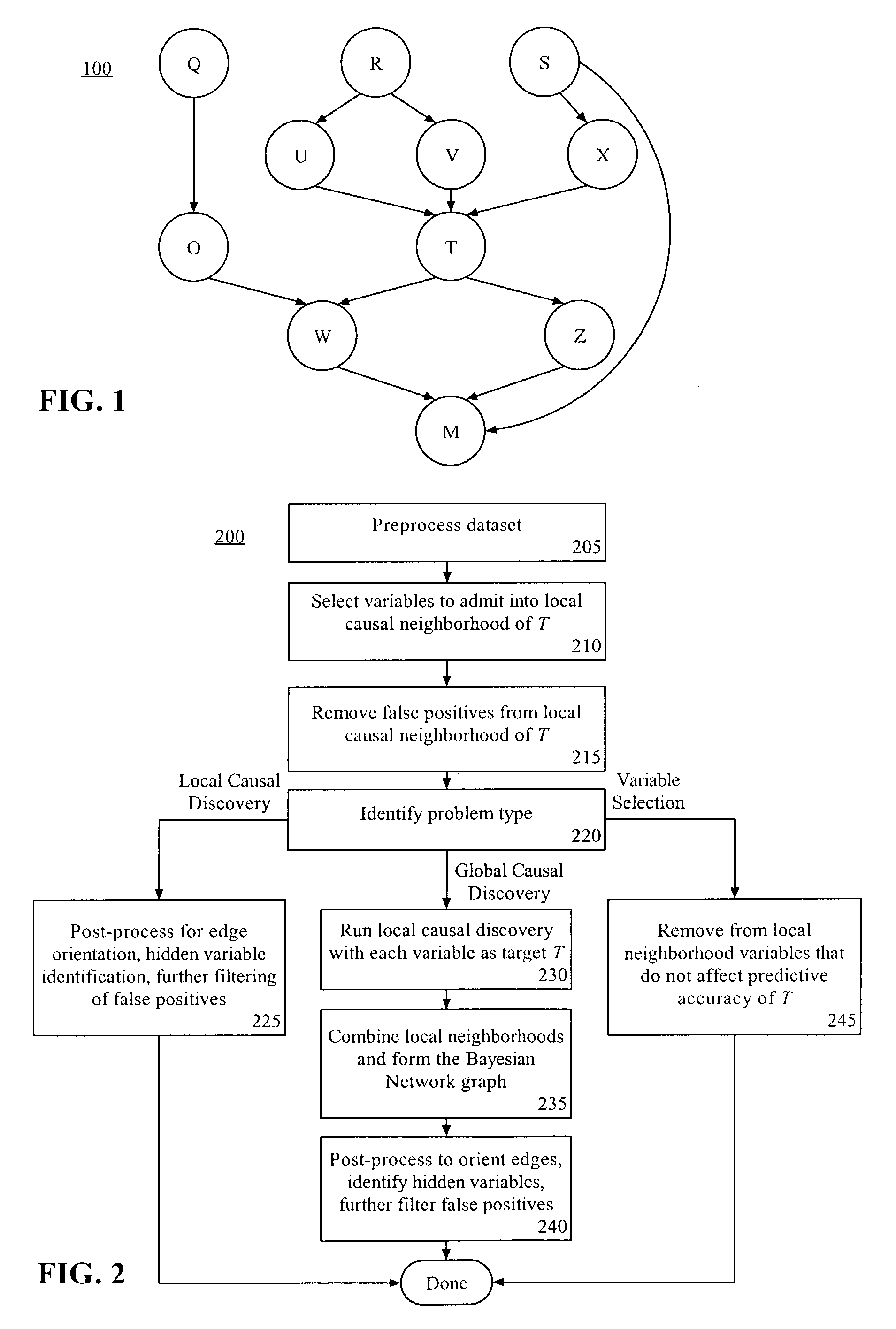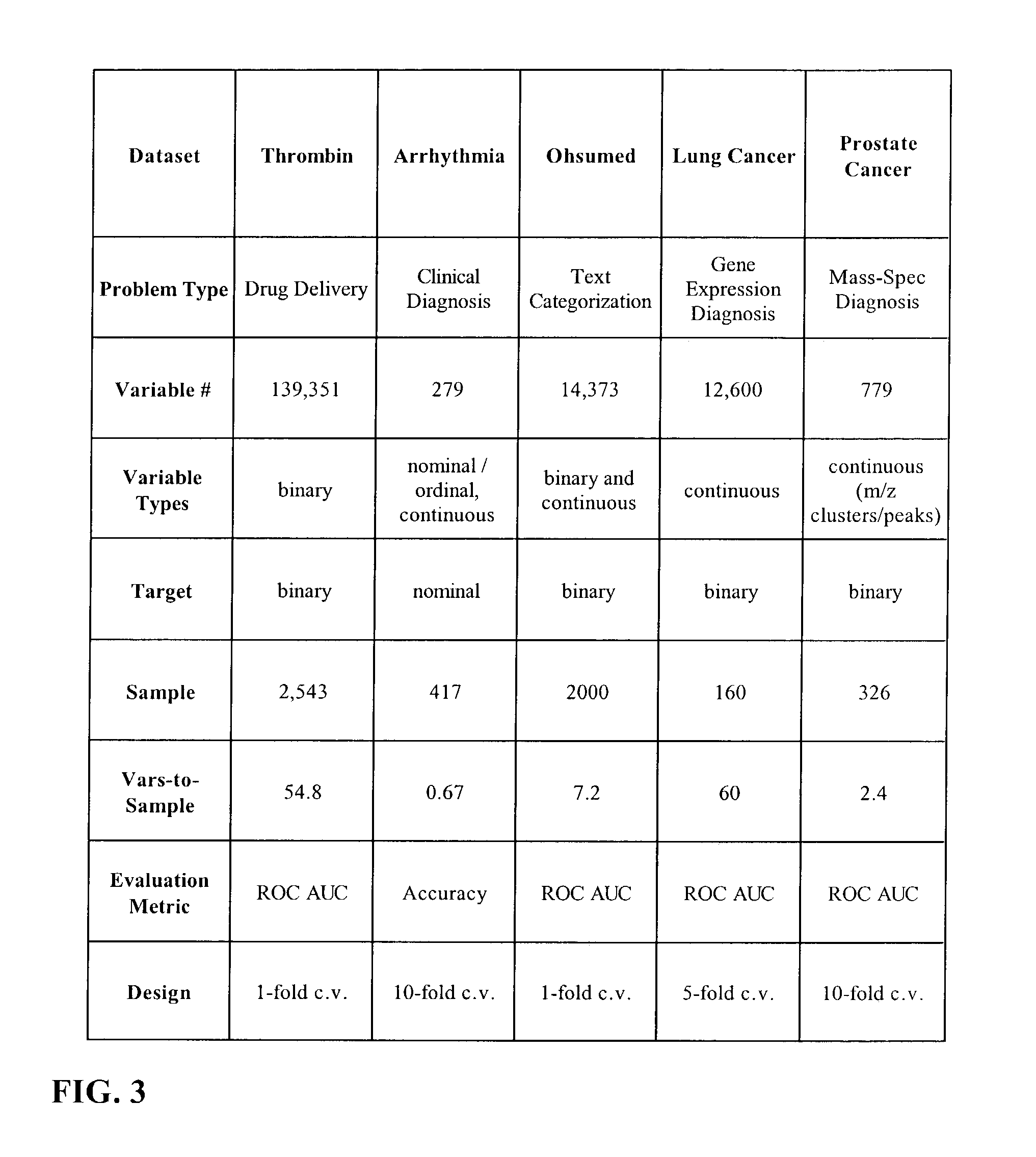Method, system, and apparatus for casual discovery and variable selection for classification
a technology of feature selection and classification method, applied in the field of data processing and analysis, can solve the problems of increasing the difficulty of variable selection for classification in biomedicine, the difficulty of identifying the variables directly causing or being caused by the target variable, and the difficulty of variable selection, so as to reduce the cost of observation and data collection as well as the amount of computational time needed to use such models. , the effect of reducing the cost of observation and data collection
- Summary
- Abstract
- Description
- Claims
- Application Information
AI Technical Summary
Benefits of technology
Problems solved by technology
Method used
Image
Examples
Embodiment Construction
[0039]The present invention provides a method, system, and apparatus for performing local and global causal discovery and variable selection for classification from statistical data. As used herein, the terms “classification accuracy” or “prediction accuracy” refer to classification and / or regression performance as determined using appropriate measures, including, but not limited to, 0 / 1 loss, mean-squared error, area under the ROC curve, area under the 11-point precision-recall curve, etc. The various embodiments disclosed herein are provably correct in data generating processes which can be faithfully represented using a Bayesian Network. If the data generating process cannot be faithfully captured by a Bayesian Network, the present invention can return an approximation solution to the problem at hand. Each of the various references cited herein is fully incorporated by reference.
[0040]More particularly, the present invention can perform local causal discovery to determine the dir...
PUM
 Login to View More
Login to View More Abstract
Description
Claims
Application Information
 Login to View More
Login to View More - R&D
- Intellectual Property
- Life Sciences
- Materials
- Tech Scout
- Unparalleled Data Quality
- Higher Quality Content
- 60% Fewer Hallucinations
Browse by: Latest US Patents, China's latest patents, Technical Efficacy Thesaurus, Application Domain, Technology Topic, Popular Technical Reports.
© 2025 PatSnap. All rights reserved.Legal|Privacy policy|Modern Slavery Act Transparency Statement|Sitemap|About US| Contact US: help@patsnap.com



